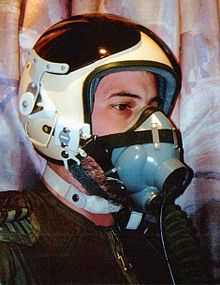Throat microphone


A throat microphone, also laryngophone, is a type of contact microphone that absorbs vibrations directly from the wearer's throat by way of single or dual sensors, often called "transducer," worn against the neck. The throat microphone's design has several advantages. The transducer can pick up speech even in extremely noisy or windy environments, such as on a motorcycle or in a night club, whereas other types of microphones do not function well under those conditions because of high levels of background noise. More advanced throat microphones are also able to pick up whispers, and therefore performs well in environments where one has to keep quiet while communicating with others at a distance, such as during covert military operations. Throat microphones are also very useful when helmets or respiratory protection is required. Many full-face SCBA, SAR, SABA, PAPR or re-breather masks do not have a provision for a microphone inside the mask. The throat microphone can be used safely as it is positioned outside the mask's face seal and as such does not compromise the respiratory protection provided by the mask nor does it violate mask approvals and certification.
History
In 1934, aviator Wiley Post incorporated earphones and a throat mic into the design of the world’s first pressure suit to explore the limits of high-altitude, long-distance flight. During World War II German Luftwaffe pilots and panzer crews used the first throat microphones. Soon after, they were adopted by American air forces, (USAF with the T-20 and T-30 and the UAF with the Mark II). Later, Soviet pilots relied on LA-3 and LA-5 models.[1]
Starting in the 1970s, researchers explored the use of throat microphones in speech therapy,[2] especially to relieve stuttering.[3]
Of course, throat microphones have still maintained their presence in the military, SWAT, law enforcement, and emergency services. Newer single-transducer designs are available that make the throat microphone much more comfortable to wear than earlier units and also better balance transmission quality. Additionally, this next generation of throat microphones provides varying outputs and frequency responses to accommodate a wide variety of professional communication devices such as digital and analog portable radios and TETRA & P25 systems.
In 2009 Mad Catz released the first "throat microphone" for game consoles as a Call of Duty: Modern Warfare 2-branded Xbox 360 accessory.[4] It should be noted that these devices (usually marketed as "throat communicators") are not true throat microphones, since they have no contact microphone (which is designed for sound waves traveling through solid objects) and simply incorporate a throat-mounted, open-air microphone. These therefore will still pick up background noise from and cannot transmit whispers.
In 2012, Astra Radio Communications released its T24 "throat microphone" which is the first throat microphone compatible with the new digital two way radios in United States. [5]
Several throat microphones now exist for mobile phones, including iPhone.[6]
See also
Notes
- ↑ "Throat Microphone Accessories". Vocomotion.
- ↑ Dewar, Dewar, and Barnes (1976). "Automatic triggering of auditory feedback masking in stammering and cluttering". The British Journal of Disorders of Communication 11 (1): 19–26. PMID 938616.
- ↑ "Accessories". Casa Futura Technologies. Retrieved 7 July 2011.
- ↑ Gizmodo: Mad Catz Modern Warfare 2 Throat Mic and Controller Review (Xbox 360)
- ↑ ARC T24 Series Open Neck Throat Mics
- ↑ Think Geek: Black Ops Throat Mic iPhone Headset